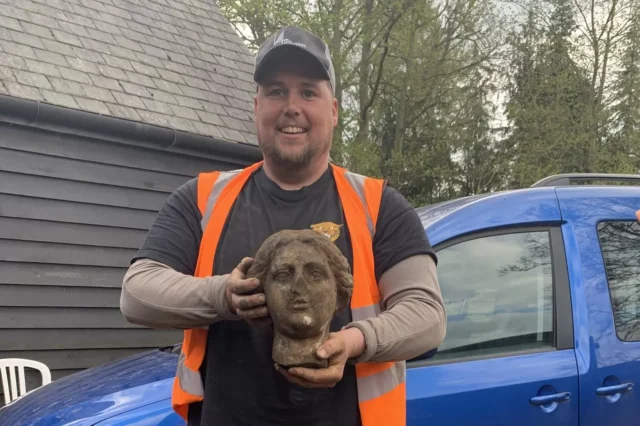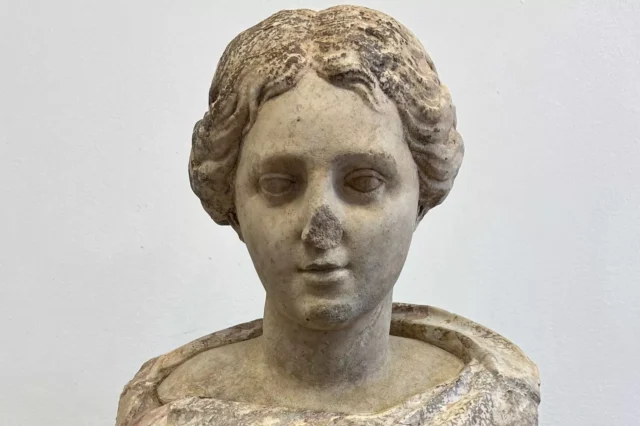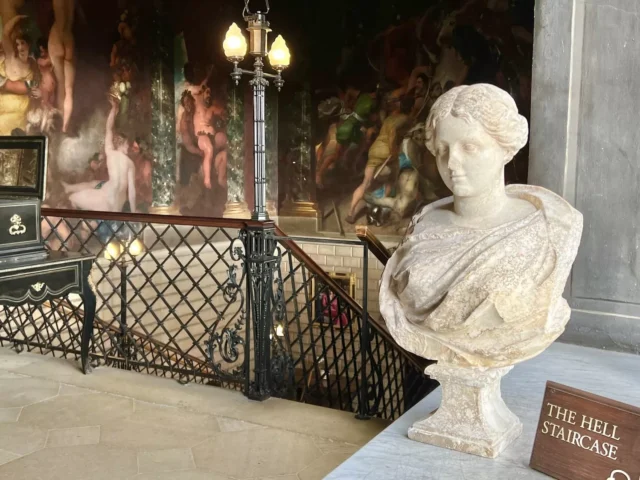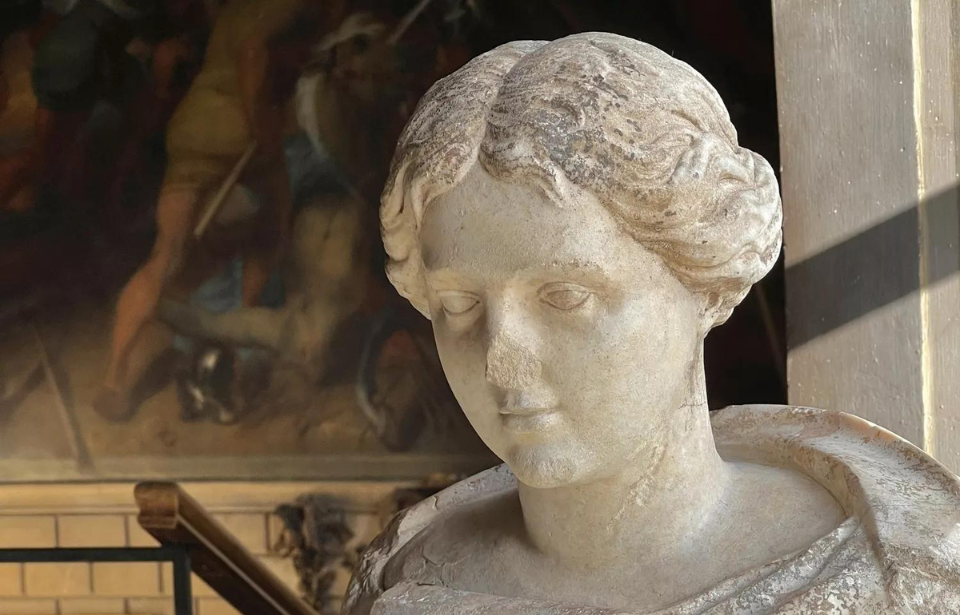Burghley House was built between 1555 and 1587 and was made famous not only for its owner, William Cecil, adviser to Elizabeth I but also because it has been featured on popular television shows and movies, including The Crown and Pride and Prejudice (2005). Now, the mansion is getting recognized for something entirely different – the head of an ancient Roman statue has been found on the estate, and no one knows how it got there.
Discovering the bust
The bust was discovered during renovations at Burghley House in Lincolnshire in 2023. Construction worker Greg Crawley was operating an excavator to dig up an area to make way for a new parking lot at the estate when he stumbled upon something strange. “I had a real shock as the digger bucket rolled over what I thought was a big stone to reveal a face,” he explained. “When I picked it up, I realized it was a head of a statue.”

The marble statue depicts the neck and face of a woman with wavy hair and a neutral expression. It is also missing the tip of her nose.
Finding a second piece
While the excitement of the first discovery was still present, a second discovery was made. Just a few weeks following the unearthing of the head, the woman’s shoulders were found. After a professional conservator cleaned up and attached both pieces, the bust revealed “the features of a beautiful Roman lady.”

Interestingly, the two pieces come from different time periods. The head was dated back to the first or second century, while the shoulders were found to have been sculpted much later. “This kind of Frankenstein statue was common in the 18th century, as adding modern shoulders made the ancient head more desirable to a potential buyer,” explained Victor Mather, writer for the New York Times.
Researchers believe that the statue came to life at Burghley after Brownlow Cecil, the Ninth Earl of Exeter, took a trip to Italy in the 1760s. Still, finding it underground came as a shock. “I couldn’t believe it when they told me it was a Roman marble statue,” Crawley said. “It was an amazing feeling to have found something so old and special.”
Theories as to how it came to be buried
Of course, finding an ancient Roman statue in the ground has sparked the question, “How the heck did the woman make her way from Burghley House … to a shallow grave 300 yards away?” Naturally, some theories have been circulating to explain the phenomenon. Some believe it was “someone simply discarding the statue and it later being covered by soil.” However, the estate’s curator, Jon Culverhouse, has his own theory.

Culverhouse thinks the statue reached its spot in the ground following an attempted burglary. He believes that within a century of its arrival in Burghley, somebody tried to steal it. Supporting this theory is the fact that it was found near a driveway that leads to the mansion’s tradesmen’s entrance, “a likely escape route for thieves” who ultimately abandoned the statue farther down the property. “It’s heavy,” Culverhouse said. “I could well imagine them thinking, ‘We’ll put it here and come back later.'” However, there is no historical record of any attempted burglary to support his claim.
More from us: AI Helps Scholars Decipher A 2,000-Year-Old Scroll Destroyed by Mount Vesuvius
How the bust came to be buried in a shallow grave a quarter of a mile from the estate is still a mystery, but now it has been returned to its home inside Burghley. It sits beside Hell’s Staircase at the estate, joined by an explanation of its discovery.
